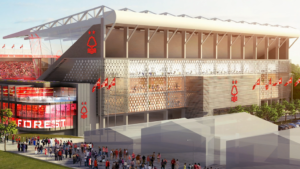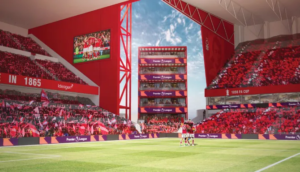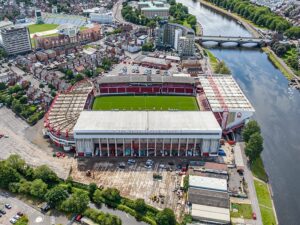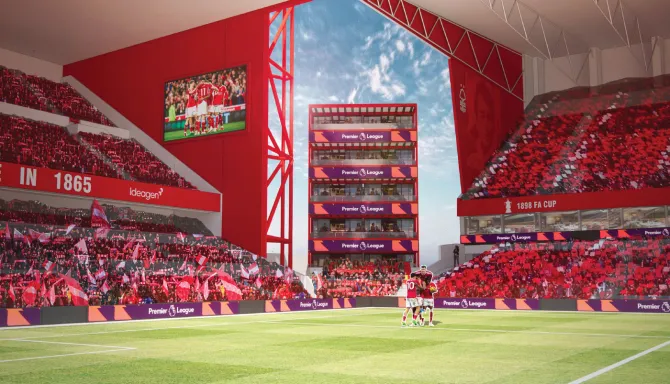Nottingham Forest Football Club has unveiled an ambitious plan to redevelop its historic City Ground stadium, aiming to transform it into a modern, 40,000-capacity venue while preserving its rich heritage. This extensive project, estimated to cost over £94 million, is set to commence in the summer of 2026 and is expected to significantly enhance the club’s infrastructure and fan experience. (
Vision and Capacity Expansion
The cornerstone of the redevelopment is the replacement of the aging Peter Taylor Stand. Plans include constructing a state-of-the-art, two-tiered 10,000-seat structure that will not only increase seating capacity but also introduce modern amenities such as world-class dressing rooms, executive boxes, and improved media suites. Additionally, the Bridgford Stand will be extended by 5,000 seats, contributing to the overall capacity increase to 40,000 . 
To further enhance the stadium’s appeal, Nottingham Forest has introduced innovative features inspired by the 2022 FIFA World Cup’s 974 Stadium in Qatar. Between the Trent End and the Brian Clough Stand, a new five-story structure made from shipping containers will house 20 luxury hospitality suites, including two exclusive penthouse suites with direct access to padded balcony seats. This addition aims to provide a unique and sustainable fan experience .
Community Integration and Economic Impact
The redevelopment plan emphasizes community integration and economic growth. A proposed 13-storey apartment building adjacent to the stadium is expected to generate additional revenue, which will be reinvested into the stadium’s construction. Moreover, the club plans to contribute £470,000 towards local infrastructure, including schools and healthcare facilities . 
The project is anticipated to create approximately 344 jobs upon completion and generate an estimated £800 million economic benefit to the local economy over the next decade . These developments underscore Nottingham Forest’s commitment to becoming a central hub for sports and community activities in the region.
Environmental Considerations and Sustainability
Environmental sustainability is a key focus of the redevelopment. Plans include the installation of solar panels on the Brian Clough Stand to reduce the stadium’s carbon footprint. The use of shipping containers for the new hospitality suites not only provides a modern aesthetic but also aligns with sustainable building practices .
Training Ground and Museum Initiatives
In parallel with the stadium redevelopment, Nottingham Forest is planning to build a new training ground. The proposed facility will feature a two-storey academy building with 14 changing rooms, classrooms, a physio room, and a gym, aiming to provide top-tier training amenities for players .
Additionally, the club plans to open a museum beneath the Trent End, offering fans and visitors a chance to explore the rich history of Nottingham Forest and its contributions to English football . 
Future Outlook
The redevelopment of the City Ground represents a significant step in Nottingham Forest’s ambition to return to European competition and establish itself as a leading club in the Premier League. With the support of owner Evangelos Marinakis and the club’s leadership, the project is poised to transform the City Ground into one of England’s premier football stadiums, blending modern facilities with the club’s storied past.
As the project progresses, Nottingham Forest remains committed to keeping fans and the local community informed and engaged, ensuring that the redevelopment reflects the aspirations and values of all stakeholders involved.













